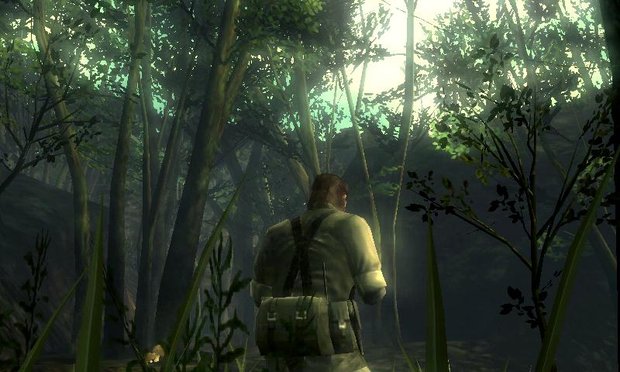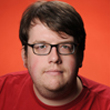GamesRadar+ Verdict
Pros
- +
A terrific game that holds up considerably well
- +
Impressive amount of content squeezed onto portable
- +
One of our favorite theme songs
Cons
- -
Lengthy cutscenes not suited for a handheld
- -
Without Circle Pad Pro
- -
camera can be tricky
- -
Better options out there to play this game
Why you can trust GamesRadar+
Metal Gear Solid 3: Snake Eater remains one of the high points of the PS2’s lifecycle. Following the love/hate reaction to the highly polarizing MGS2, the third game returned the series to its roots, combining a retro spy thriller with its unique approach to philosophizing on the nature of war. Series creative lead Hideo Kojima and his team at Kojima Productions retrofitted the game for Nintendo’s 3D handheld in the form of Metal Gear Solid: Snake Eater 3D, but with so many other ways to experience this game, this isn't the definitive version.
Taking place in the early 1960s, Snake Eater puts you in the role of Naked Snake, a spy who becomes embroiled in a multinational crisis that will put the world at threat of nuclear war. And while you'll find out more about him and where he ends up within the series, in MGS3D he’s a relatively new operative given a suicide mission: He must kill his mentor, The Boss, along with her team of freakish underlings, before the Cold War hits a point of no return. The tale unfolds with Kojima’s heavy emphasis on cutscenes and lengthy conversations, though they aren't used as often as in the particularly verbose MGS2 or the benchmark MGS4.
Snake and his Virtuous Mission are based in a simpler time, and its naturalistic setting reflects that. Snake is exploring the wilderness (quite a change from the settings of other MGS adventures) as he hunts down the members of the dangerous Cobra Unit, a group (all named "The ___," such as "The Fear" and "The Sorrow") whose membership includes some of the best boss fights in series history. Facing off against The End, in particular, is worth the price of admission alone, as the battle against him is so expertly executed that it remains one of the greatest achievements in gaming history.

MGS3D's controls are a testament to the agelessness of Kojima Productions' once-advanced gameplay additions. The once-revolutionary Close Quarters Combat is an admirable approach to single button combat that plays into the series’ emphasis on stealth, as does the camouflage system. Equipping and reequipping clothes and face paint keeps you on your toes more than the simple thrill of hiding from a guard. Time has been less kind to Snake’s constant need to eat and dress his wounds, but this kind of experimentation is one of the reasons we love Kojima as a developer.
The core gameplay driving MGS3 has aged and translated well to the 3DS, but other elements don't dovetail with the hardware. First off, the overall pacing of the story is hurt by this console experience being moved to a handheld. The lengthy cutscenes don’t work so well when you might be force pause at a random bus stop. The same goes for the save system, as you could be stuck in a lengthy CODEC conversation when you’d rather be saving before your plane lands. Although it's still an amazing game to play, it's hard to recommend this as the most ideal experience for someone who's never played Snake Eater.

The controls fare much better than the pacing, with some areas greatly improved by the inclusion of a touch screen. The HUD now resides on the lower display, leaving the top screen clear for action, which is good considering that it's sometimes over-cluttered before you even factor in maps and weapons. Now the interface for medical care and camo are on the bottom screen, which has a touch interface that removes some of the unnecessary steps you may have once dealt with to use those systems.
With aiming, firing, and CQC combat assigned to the shoulder buttons, it frees up the face buttons to control the 3D camera, but we frequently found that option lacking no matter how much we played with the options. If you own a Circle Pad Pro the experience is immensely improved. MGS3 was designed as a game played with two sticks, and the CPP’s second analogue pad and set of four shoulder buttons make a pretty good match. Metal Gear Solid 3D is certainly worth playing without the add-on, but using the Circle Pad really enhances it. Other frills are added that use the 3DS's camera and the motion controls, but they're far from essential.

Metal Gear Solid Snake Eater 3D emulates one of the best games ever adeptly, and if you’re a Nintendo fan that never owned any of the previous systems it appeared on, it’s worth exploring. However, if you have the Subsistence version for PS2 or last November’s MGS HD Collection (which costs the same as this 3DS remake), MGS3D isn’t a superior replacement. Metal Gear Solid 3 remains one of the best games ever made and while it's not the definitive version to play, Snake Eater 3D is still a great way to experience it.
More info
| Platform | "3DS" |
Henry Gilbert is a former GamesRadar+ Editor, having spent seven years at the site helping to navigate our readers through the PS3 and Xbox 360 generation. Henry is now following another passion of his besides video games, working as the producer and podcast cohost of the popular Talking Simpsons and What a Cartoon podcasts.




